
Incorporating plants native to your climate means less water, less maintenance, and more wildlife. Here are our top picks around the West
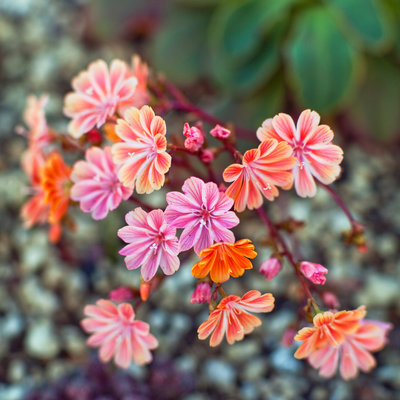
Thomas J. Story
Lewisia
(Lewisia cotyledon)
Native to: California and southern Oregon
To about 1 ft. high, 10 in. wide. Rosettes of narrow, fleshy, evergreen leaves bear 10-in. stems topped by large, extremely showy clusters of 1-in. white or pink flowers often striped with rose or red. Blooms from spring to early summer. Lewisia cotyledon howellii is similar but has wavy-edged leaves and somewhat larger flowers. Prune out side growth to maintain air circulation around root crown. Can be grown in pots of fast-draining sterilized soil or growing mixes.
Incorporating plants native to your climate means less water, less maintenance, and more wildlife. Here are our top picks around the West
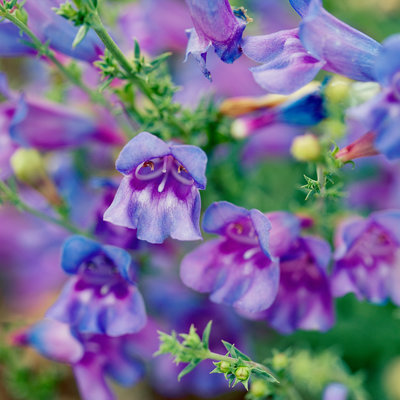
Steven Gunther
Penstemon ‘Margarita BOP’
Native to: California
These deep blue beauties have purple throats.
Incorporating plants native to your climate means less water, less maintenance, and more wildlife. Here are our top picks around the West
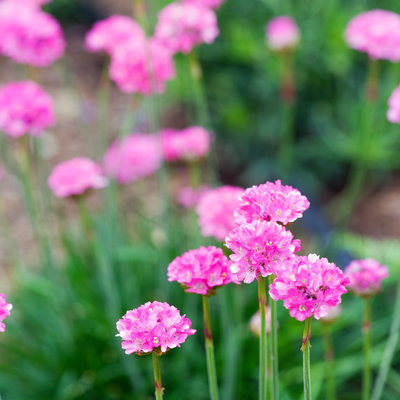
Kimberley Navabpour
Common thrift
(Armeria maritima)
Native to: California, Oregon, Washington, and B.C.
Tufted mounds spread to 1 ft.; leaves are 6 in. long. White to rose pink flowers in tight clusters atop 6–10-in. stalks. Bloom is profuse in spring (goes on almost all year in mildest climates). Sturdy, dependable plants for edging walks or borders and for tidy mounds in rock gardens or raised beds. Attractive in containers. Good drainage is essential and permits regular watering, but safest tactic is to water moderately in dry climates, sparingly in moister regions. Tolerate seaside conditions, infertile soil. Clumps spread slowly and need dividing only when bare centers show.
Incorporating plants native to your climate means less water, less maintenance, and more wildlife. Here are our top picks around the West
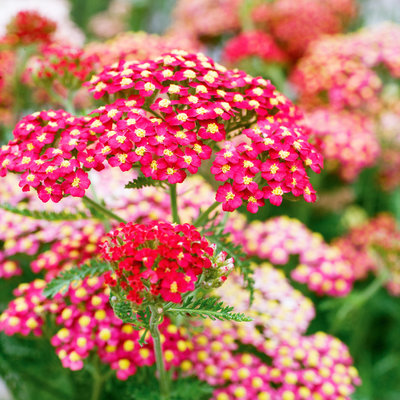
Linda Lamb Peters
Yarrow
(Achillea)
Makes a flat, spreading mat (about 1 1/2 ft. wide) of fernlike, hairy leaves. Golden flower heads in flat clusters top 6-10-in. stems. A good edging and a neat ground cover for small areas; useful in rock gardens. Shear off dead flowers to leave attractive gray-green mat.
Incorporating plants native to your climate means less water, less maintenance, and more wildlife. Here are our top picks around the West
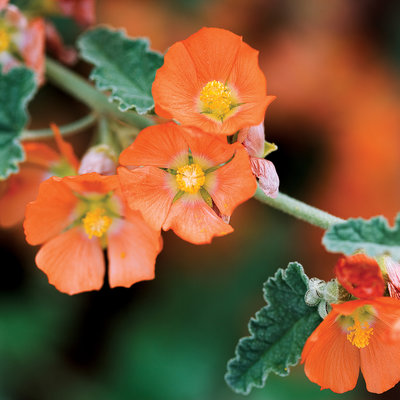
Steven Gunther
Apricot mallow
(Sphaeralcea ambigua)
Native to: California
Downy stems bear flowers in summer. Grows 3 to 4 feet tall.
Incorporating plants native to your climate means less water, less maintenance, and more wildlife. Here are our top picks around the West
Skip Advertisement
Around The Web
Incorporating plants native to your climate means less water, less maintenance, and more wildlife. Here are our top picks around the West
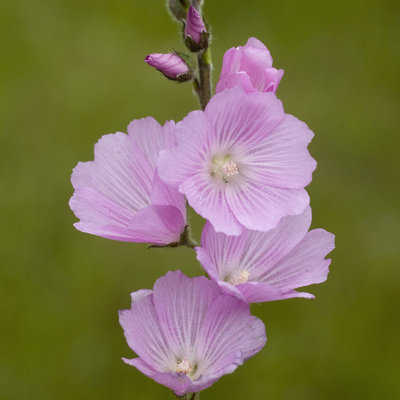
Kevin Schafer
Pink checkerbloom
(Sidalcea malviflora)
Native to: Oregon, California, and Baja California
Grown for clusters of five-petaled flowers like little hollyhocks May grow erect to 2 ft. high and wide; or may sprawl and spread more widely by rooting at the nodes. Pink or purplish pink, 2-in. flowers in early spring.
Incorporating plants native to your climate means less water, less maintenance, and more wildlife. Here are our top picks around the West
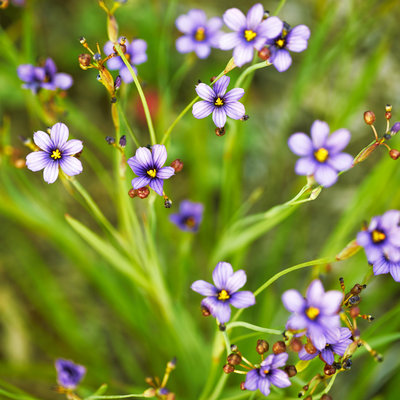
Marion Brenner
Blue-eyed grass
(Sisyrinchium idahoense bellum)
Native to: Coastal California and Oregon
Grows 4 in. to 2 ft. high, 6 in. to 2 ft. wide. Green or bluish green leaves. Purple to bluish purple, 1/2-in. flowers appear in spring. Several named forms, many of them dwarf, are available.
Incorporating plants native to your climate means less water, less maintenance, and more wildlife. Here are our top picks around the West
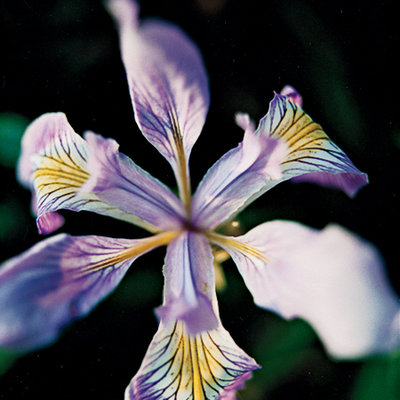
John Clark
Pacific coast iris
(Iris hybrid)
Native to: Pacific Coast states
Eleven species constitute a homogeneous group within the genus Iris, from which breeders have developed hybrids in a broad range of colors and patterns; flowers may be white, blue shades, pink, copper, brown, maroon, violet—many with elaborate veining or patterning. Foliage is narrow; clumps are like coarse grass. Slender flower stems reach 8 to 24 in., depending on variety. Best conditions are sun to light shade, well-drained soil, moderate to scant water in summer. Intense heat coupled with water and poor drainage can be fatal; in clay soil, grow in raised beds in organically amended soil. Plant from containers any time, though spring and fall are best.
Incorporating plants native to your climate means less water, less maintenance, and more wildlife. Here are our top picks around the West
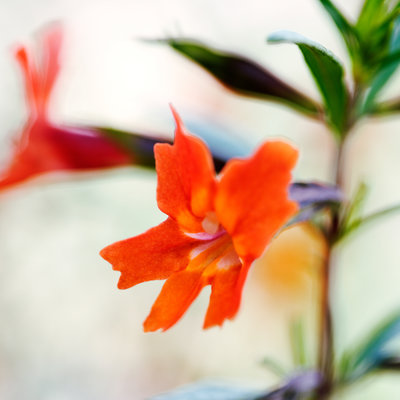
Steven Gunther
Sticky monkey flower
(Mimulus aurantiacus)
Native to: California
Flowers in shades of red, yellow, and orange in spring and summer.
Incorporating plants native to your climate means less water, less maintenance, and more wildlife. Here are our top picks around the West
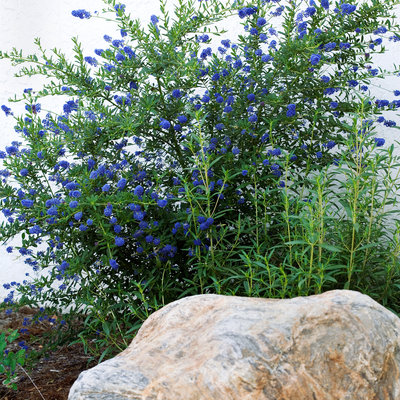
Steven Gunther
Wild lilac
(Ceanothus)
Native to: California
Many kinds ― groundcovers to tall shrubs. All bear flowers of blue or white in spring. ‘Concha’ grows 6 to 7 feet tall.
Incorporating plants native to your climate means less water, less maintenance, and more wildlife. Here are our top picks around the West
Skip Advertisement
Around The Web
Incorporating plants native to your climate means less water, less maintenance, and more wildlife. Here are our top picks around the West
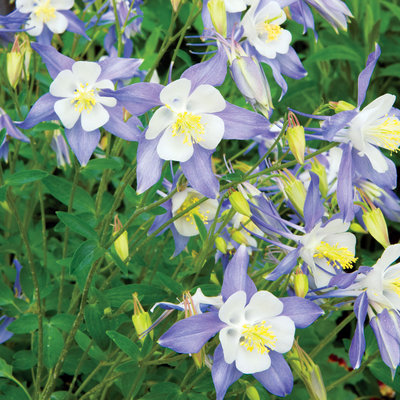
D.A. Horchner / Design Workshop
Rocky Mountain columbine
(Aquilegia coerulea)
Melting snow awakens a riot of hardy high-alpine blooms along the Tundra World Nature Trail, an easy half-mile paved footpath starting from the Rock Cut on Trail Ridge Road. Look for forget-me-nots, sky pilo and alpine sunflower (cheery yellow blossoms that grow only in Rocky Mountain).
Incorporating plants native to your climate means less water, less maintenance, and more wildlife. Here are our top picks around the West
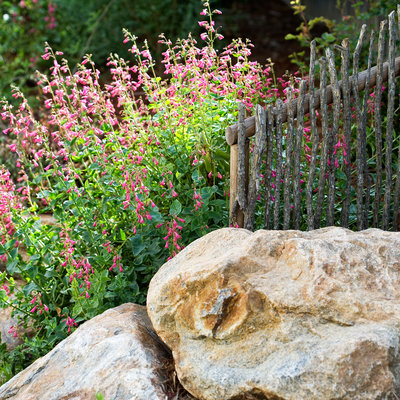
Steven Gunther
Desert beard tongue
(Penstemon pseudospectabilis)
Native to: California
Upright shrub (to 2 to 4 feet tall) that bears pink to purplish flowers spring into summer.
Incorporating plants native to your climate means less water, less maintenance, and more wildlife. Here are our top picks around the West
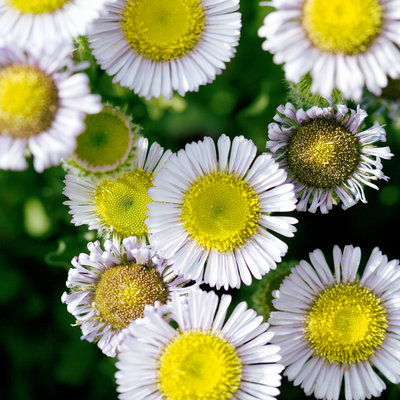
Steven Gunther
Beach aster
(Erigeron glaucus ‘Cape Sebastian’)
Native to: California
Clumping perennial to 1 foot tall with daisy flowers in summer. Native to the coast, it burns in hot sun.
Incorporating plants native to your climate means less water, less maintenance, and more wildlife. Here are our top picks around the West
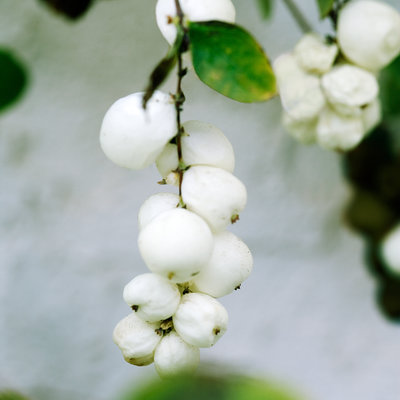
Steven Gunther
Common snowberry
(Symphoricarpos albus)
Native to: California
Deciduous shrub that bears pink flowers followed by white berries from late summer to winter. Grows 2 to 6 feet tall.
Incorporating plants native to your climate means less water, less maintenance, and more wildlife. Here are our top picks around the West
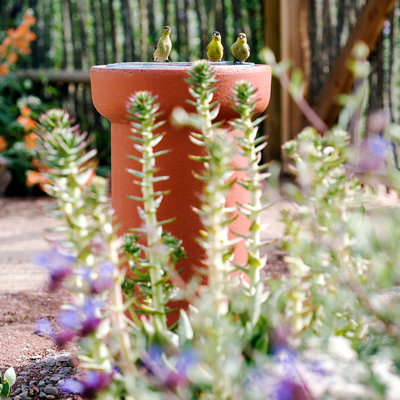
Steven Gunther
Salvia ‘Celestial Blue’
Native to: California
Three lesser goldfinches pause at a birdbath with Salvia ‘Celestial Blue’ growing in the foreground. Evergreen shrub with lavender-blue flowers in early summer and gray-green leaves.
Incorporating plants native to your climate means less water, less maintenance, and more wildlife. Here are our top picks around the West
Skip Advertisement
Around The Web
Incorporating plants native to your climate means less water, less maintenance, and more wildlife. Here are our top picks around the West
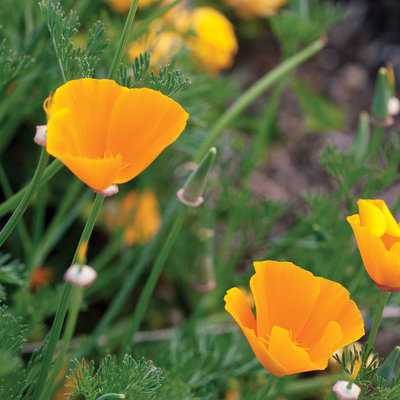
Kimberley Navabpour
California poppy
Native to: California and Oregon
Free branching from base, with slender, 8–24 in.-long stems and blue-green, finely divided leaves. Single, satiny-petaled flowers about 2 in. wide; color varies from pale yellow to deep orange. Flowers close at night and on overcast days. In mild climates, it blooms from spring to summer and reseeds freely. Naturalized not just in California but also in parts of Hawaii. In cold-winter areas, generally used as a summer annual.
Incorporating plants native to your climate means less water, less maintenance, and more wildlife. Here are our top picks around the West
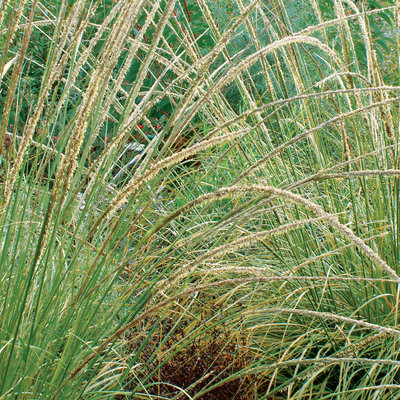
Joshua McCullough
Deer grass
(Muhlenbergia rigens)
Native to: California to Texas and south into Mexico
Bright green leaves form a dense, tight clump to 4 ft. high and wide. Slender yellow or purplish flower spikes in autumn are erect at first, then leaning; rise 2 ft. above the leaves.
Incorporating plants native to your climate means less water, less maintenance, and more wildlife. Here are our top picks around the West
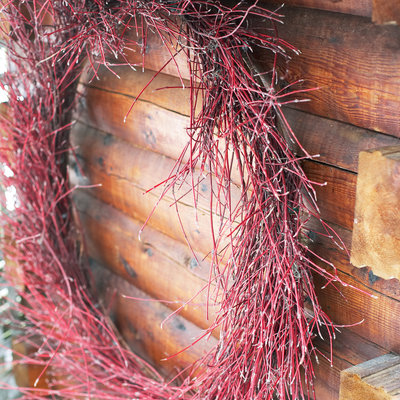
Thomas J. Story
Redtwig dogwood
(Cornus stolonifera)
Native to: Northern California to Alaska and eastward
Grown for brilliant red fall foliage and winter twigs. Thrives not only in the coldest mountain areas of West but also throughout California—even in intermediate valleys of Southern California if given frequent water. Grows rapidly to form a multi-stemmed shrub 7—9 ft. high; spreads to 12 ft. or wider by creeping underground stems and rooting branches. Oval, 1 1/2—2 1/2-in.-long, fresh deep green leaves. Small, creamy white flowers in 2-in. clusters appear among leaves throughout summer; white or bluish fruits follow.
Incorporating plants native to your climate means less water, less maintenance, and more wildlife. Here are our top picks around the West
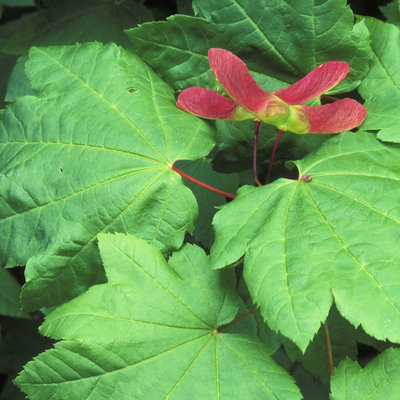
Purestock / Getty Images
Vine maple
(Acer circinatum)
Native to: Northwest
In the forest shade, plant is crooked, sprawling, and vine-like, with many stems from the base. In the open, it becomes a nearly symmetrical small tree 5–35 ft. high, with one or several trunks. Leaves nearly circular, to 6 in. across, with 5–11 lobes; red tinted when new, light green as they mature, then orange, scarlet, or yellow in fall. Tiny reddish purple spring flowers are followed by winged red seeds. Let it go untrimmed to make natural bowers, ideal setting for ferns and woodland flowers. Use under a canopy of tall conifers where its blazing fall color offers brilliant contrast. Can be espaliered against shady side of a wall. Its contorted leafless branches to make an intricate pattern in winter.
Incorporating plants native to your climate means less water, less maintenance, and more wildlife. Here are our top picks around the West
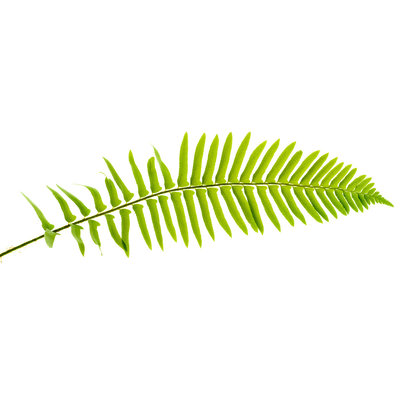
Thomas J. Story
Western sword fern
(Polystichum munitum)
Native to: California to Alaska and Montana, Idaho, and South Dakota.
Most common fern of Western forests. To 2–4 ft. high and wide. Leathery, lustrous dark green fronds are erect, then spreading. Each leaflet is dagger shaped, with toothed edges and a base that looks rather like a sword hilt. Old plants may have 75–100 fronds. Long lasting when cut for arrangements. Established plants get by with reduced moisture.
Incorporating plants native to your climate means less water, less maintenance, and more wildlife. Here are our top picks around the West
Skip Advertisement
Around The Web
Incorporating plants native to your climate means less water, less maintenance, and more wildlife. Here are our top picks around the West
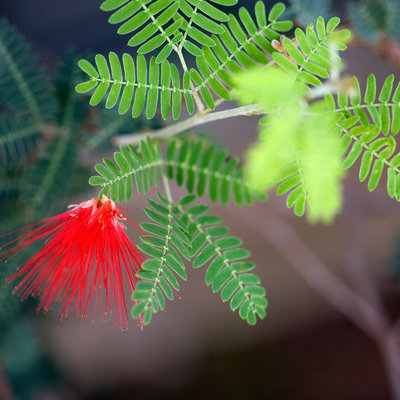
Steven A. Gunther
Baja fairy duster
(Calliandra californica)
Native to: Baja California
It’s a favorite with Southwest gardeners and reaches 5 ft. tall. The shrub attracts hummingbirds with its brilliant red stamens that resemble powder puffs. Use it as an accent in front of a living ocotillo fence or as a backdrop for small blue agaves.
Incorporating plants native to your climate means less water, less maintenance, and more wildlife. Here are our top picks around the West
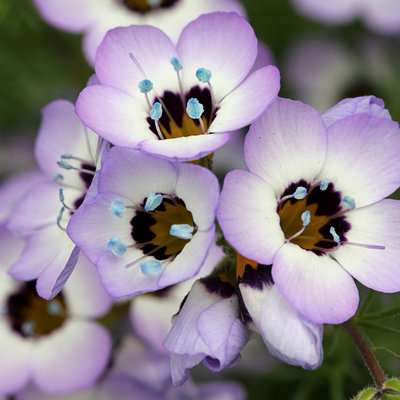
Annie’s Annuals & Perennials
Bird’s eyes
(Gilia tricolor)
Native to: California
Slender plants with finely cut leaves and colorful flowers from late spring to early fall. Useful in wild garden or borders. In fall or early spring, sow seeds in well-drained soil where plants are to grow. Thin seedlings to avoid crowding. Grows to 4–18 in. high, about 9 in. wide. Subtly beautiful flowers, carried singly or in clusters, are 1/2 in. wide or wider, with pale to deep violet with yellow throat spotted purple; blue pollen.
Incorporating plants native to your climate means less water, less maintenance, and more wildlife. Here are our top picks around the West
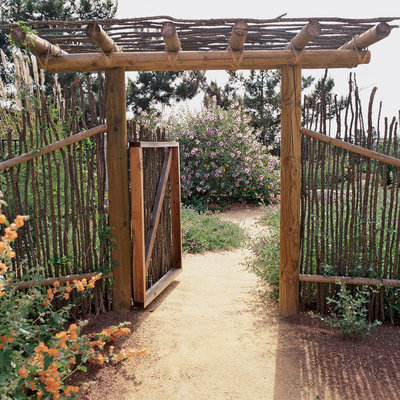
Steven Gunther
Ocotillo
(Fouquieria splendens)
Native to: Southwest
A decomposed granite path passes through a fence and gate made from ocotillo. The winding walkway invites exploration of more of this casual low-water landscape.
Incorporating plants native to your climate means less water, less maintenance, and more wildlife. Here are our top picks around the West
Around The Web
Related Links
SOURCE:http://www.sunset.com/garden/earth-friendly/backyard-wildlife-sanctuary/ad-1